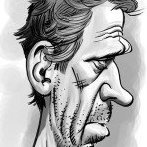-
Content Count
17,517 -
Joined
-
Last visited
-
Days Won
313
Content Type
Profiles
Forums
Calendar
Everything posted by Miskiin-Macruuf-Aqiyaar
-
I thought Reer Garoowe had bii'em and such madaafiic meelo fog ku dhaci karo. Ma toban beri ayee saan ku fiirsanaayaan Reer Laascaanood and not bring madaafiic loogu jawaabo argagaxisadaan marqaansan. Shilka, suu' iyo baroomo looma baahno since coward terrorist secessionists meel fog hub ka soo tuurooyaan and is not face to face war. Mid loogu jawaabo meeshee joogaan loo baahanyahay. Reer Garoowe waxaa u leeyahay iyagaa ugu dhow Laascaanood oo Reer Nugaalna isku ah ee saan si ma'aha aad daawaneysaan.
-

Soomaali iib ah, ifkana ka iib ah
Miskiin-Macruuf-Aqiyaar replied to Miskiin-Macruuf-Aqiyaar's topic in Politics
Xasan Socdaal dalkeena waa xaraashay. Allloow naga qabo tuugadaan aanan dad, dal iyo diinba u naxeynin. -

Frequent flyer madaxweyne
Miskiin-Macruuf-Aqiyaar replied to Miskiin-Macruuf-Aqiyaar's topic in Politics
-

Secessionists declare unilateral "ceasefire"
Miskiin-Macruuf-Aqiyaar replied to Che -Guevara's topic in Politics
Muuse Muqayil is committing war crimes right before our eyes. A shelling of a city in this magnitude has not happened in three decades of civil war in Soomaaliya. This is xasuuq-like of gumaad is unprecedented. Laascaanood inay dhulka la simaan ayee rabaan these wretched secessionists. One thing will be clearn henceforth: These these decades-long of crocodile tears victimhood of 'dowladii Kacaanka ayaa na xasuuqday' and lafa soo faagid, no Soomaali will ever listen to them. They exposed themselves munaafiqiin aanan naxeynin inay yihiin. -
Another marqaan-induced diarrhea:
-
Ka daroo doonfaar dhal.
-
Beesha caalamka loo cagajugleynaayaa. Secessionists daily marqaamid for decades not only messed up ilkahooda iyo caafimaadkooda, but mentally messed up as well. Qoraalo marfish laga soo qoray ayeena qoraan.
-
Guddoomiye ku xigeenkii gobolka Sool oo iscasilay, baaqna u diray xukuumada Somaliland Guddoomiye Ku xigeenkii dhawaan xukuumada Somaliland u magacowday gobolka Sool ayaa iscasilay, xukuumadana wuxu ugu baaqay in ay ciidankeeda kala baxdo gobolka. Saleebaan Diiriye Cabdi oo madaxweyne Biixi u magacaabay xilka guddoomiye ku xigeenka Sool bilowgii kacdoonka Laascaanood, ayaa sheegay in uu xalka nabadu ku jiro Somaliland oo ciidankeeda la baxda. "Xalkii Laascaanood kolay xabad ayuu noqday, umada inta hadhay in ay kala badbaado waxa lagu heli karaa ciidamadaas oo Laascaanood lagala baxo," ayuu yidhi Diiriye. Waxa kale oo uu sheegay in Laascaanood ayna ku dagaalamayn argagixiso lakiin ay dagaalamayaan ciidamada Somaliland iyo dadkii deegaanka, waxa uu sheegay in ciidan beeleedyo iyo ciidamada Somaliland uu dagaalku u dhexeeyo. Waxa uu sheegay in uu iska casilay xilkii uu u hayay xukuumada Somaliland ee ahaa guddoomiye ku xigeenka gobolka Sool, isaga oo masuuliyiinta kale ee deegaanka kasoo jeeda ee xilalka hayana ugu baaqay in ay is casilaan. Dhinaca kale, maayarka iyo qaar kamid ah golaha deegaanka ee Laascaanood ayaa iyaguna ku baaqay in ciidamada Somaliland ay ka baxaan gobolka, iyagoo ciidamada ku eedeeyay tacadiyo xuquuqda aadanaha ka dhan ah, taasi oo xukuumadu beenisay. Wasaarada gaashaandhiga oo sii adkaynaysa sheegashada Somaliland ee ah in kooxo argagixiso ahi joogaan Laascaanood, ayaa tusaale usoo qaadatay mid kamid ah dagaalyahana guddaha magaalada ku jira oo la yidhaa Cabdi Madoobe, kaasi oo ay ku eedaysay in uu yahay Alshabaab. Xigasho
-
Popular Contributors




